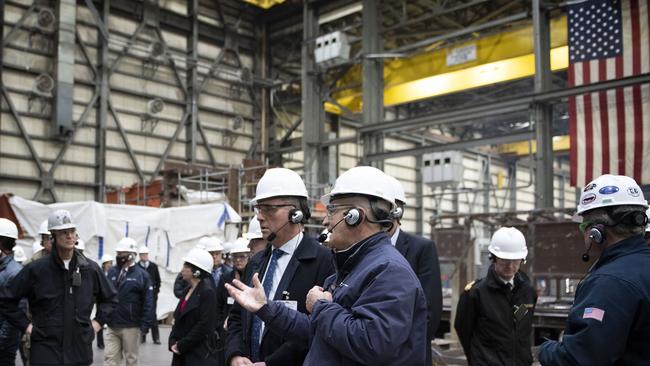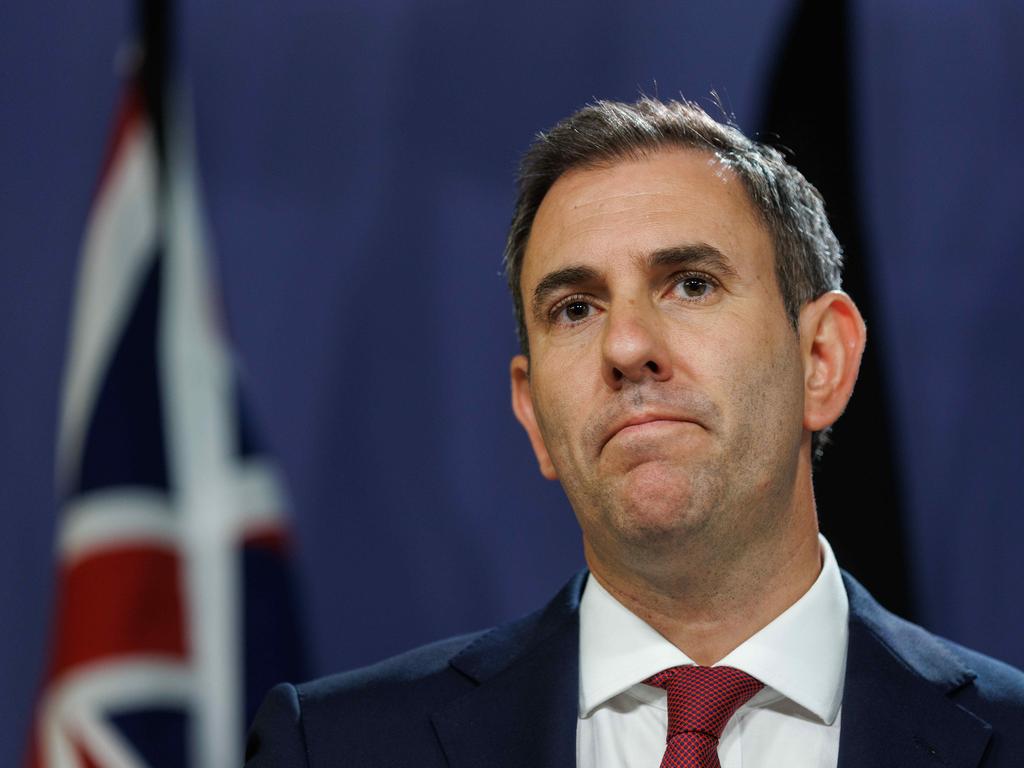Treasurer Jim Chalmers pledges to tackle budget repair
Labor wants a more ‘sustainable footing’ for its second budget, with a fresh approach towards defence, debt, the NDIS and aged care.

Jim Chalmers says fiscal repair will be an ongoing challenge and a key focus of his second budget in May as he responds to the ballooning costs of the NDIS, health, aged care, natural disasters and the impact of higher borrowing costs.
With Labor facing growing calls to restore the path back to surplus as a key policy objective, the Treasurer said he would aim to “put the budget on a more sustainable footing” and help insulate the economy from future shocks at a time of growing international uncertainty.
The focus on budget repair comes amid fresh spending demands being made on the commonwealth, with the leaders of Victoria and NSW – Daniel Andrews and Dominic Perrottet – beginning the new year by calling for an overhaul of Medicare and the primary healthcare system.
In March, Labor will also receive a report setting out the full scale of the task in acquiring a new fleet of nuclear-powered submarines under the AUKUS framework, representing a massive expense on the budget.
“The Expenditure Review Committee has already been meeting and working with cabinet colleagues over summer on its shape and strategy,” Dr Chalmers said in an opinion piece published in The Australian.
“We will continue to put the budget on a more sustainable footing, recognising the pressures coming from higher borrowing costs, health and ageing, the NDIS, defence spending and the costs of responding to natural disasters,” he said.
“We will focus on the inflation challenge and growing the economy the right way out of the downturn, bringing together our efforts on energy, skills and training, co-investment, industry policy, supply chains, data, digital and technology, workforce participation, migration and more.”

Dr Chalmers said there were reasons for Australians to be optimistic about the future, but was “realistic about the prospect of another global downturn and what that means for us” following warnings that a third of the global economy would slip into recession in 2023.
He indicated it would be a tough year for Australians, given the slowing global economy and higher interest rates were feeding into forecasts for “weaker consumption, weaker economic growth, and slightly higher unemployment”, but flagged the possibility of additional cost-of-living relief in his May budget.
“There will be cost-of-living relief in the form of help with electricity bills, higher wages for aged care workers, and cheaper childcare from July. If there are additional measures we can afford to put in place of course we’ll consider them,” he said.
With Treasury forecasting economic growth in Australia slowing to 3.25 per cent in 2022-23 and just 1.5 per cent in 2023-24, Dr Chalmers used his budget address in October to warn there were “hard days to come, and hard decisions to accompany them”.
With the budget having received criticism for locking-in an annual structural deficit of about $50bn and deferring those “hard decisions”, Labor faces growing calls to embrace spending cuts and tax increases as part of a long-term plan to balance the books.
Leading economists Chris Richardson and Warren Hogan both said the stage 3 personal income tax cuts that are set to cost $21bn each year from their start date in mid-2024 should be abandoned in their current form.
Mr Hogan, the chief economic adviser for Judo Bank, said it was “completely new in the Australia political environment to not have a pathway back to a balanced budget” and unprecedented to factor in structural budget deficits “as far as the eye can see”.
He urged Dr Chalmers to use the upcoming budget to “show a pathway back to surplus over the decade”, warning the government it could not wait until the next election to address the challenge.
“I think there’s no way that the stage 3 tax cuts can come on in their current form,” he said. “But the political pay-off to getting rid of those tax cuts has to be a demonstrated effort to be more efficient on NDIS and other core public services.”

Cautioning against raising taxes without trimming fat elsewhere, Mr Hogan warned that a bigger government was “potentially at odds with the desire to raise the productivity of the economy”.
He said the government should develop an industry policy framework for a strategic vision across public policy development, from the clean energy transition to manufacturing policy.
Leading independent economist Chris Richardson also urged the government to abandon the stage 3 tax cuts and suggested that keeping the 37 cent tax bracket instead of removing it would reduce the cost of the initiative from $21bn to $12bn a year.
But he warned that with booming commodity prices set to deliver a small temporary surplus for the 2022 calendar year before a rapid budget deterioration, the politics of justifying the need for fiscal repair would not be easy.
“How do you convince people of the need for difficult decisions when the war in Europe has already handed you a surplus anyway? … You are going to have to do it with both spending and tax. I say that for the obvious reason that it’s a big repair task.”
The October budget predicted the deficit would rise from a forecast 1.5 per cent of GDP in 2022-23 to 1.9 per cent in 2032-33. “The government has been quite correctly talking about budget repair,” Mr Richardson said. “Both sides of politics have underestimated the costs of social services.”








To join the conversation, please log in. Don't have an account? Register
Join the conversation, you are commenting as Logout